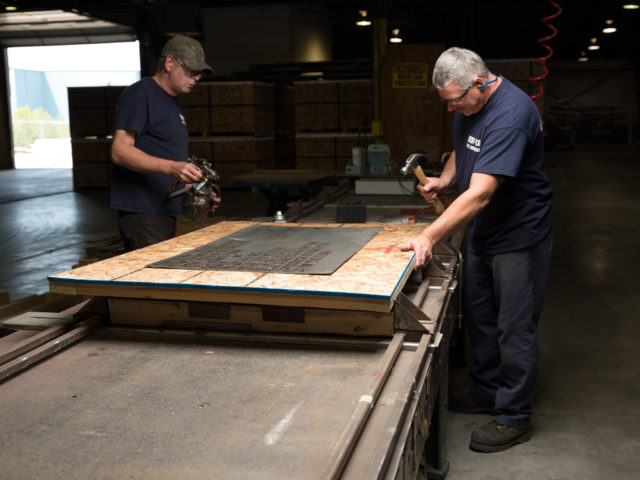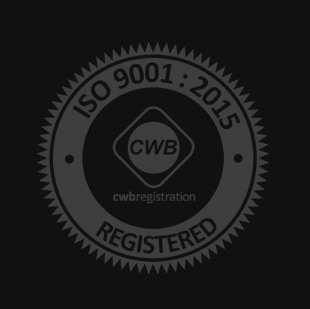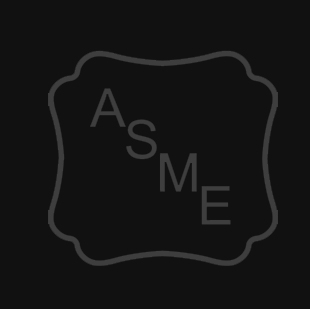The sheet metal fabrication process involves several fabrication techniques that cut, form, or join metal into custom parts and components that are further utilized in a wide range of applications. Whether building complex structures and advanced machinery or standard tools and devices, the process selectively removes, reforms, or combines material to create the desired shape. Sheet metal is flattened to a thickness, referred to as its gauge, between 0.006 and 0.25 inches from raw stock material through such methods as extrusion, rolling, or hammering. Any thinner metal gauge is considered foil, whereas thicker gauges are considered plate.
Metals used in sheet metal fabrication processes can be derived from any common raw stock material—stainless steel, aluminum, iron, bronze, copper, carbon steel—nearly any type of ferrous or nonferrous metal. Which metal selected depends mainly on its properties—corrosion resistance, tensile strength, flexibility, hardness, conductivity—required for the intended application.
Taking a Closer Look At the Sheet Metal Fabrication Process
Fabrication then consists of a variety of cutting, forming, and joining techniques that remove or deforms the material into the desired shape.
Cutting
There are two different types of metal cutting: shear and non-shear.
Shear cutting is generally used for nonindustrial components and end products. It includes such processes as cutting, shearing, and blanking. The basic process itself, cutting, uses a single blade to cut through the material. Shearing is, essentially, a similar action as scissors. Upper and lower blades cut through a straight line. One blade remains stationary while the other cuts through the metal. Blanking is a robust hole punching process that cuts out cookie cutter-like designs from the metal.
Non-shear cutting is a process used for integral parts and components found in large-scale industrial applications and products. The process requires precision and accuracy accomplished through a variety of methods:
- Laser cutting, which applies a focused beam of energy;
- Plasma cuts using heated gases; waterjet cutting, which applies concentrated streams of water with abrasives;
- Simply machining the sheet metal with drill bits and lathes, or processes like spinning or milling.
Forming
Forming is a sheet metal fabrication process that bends or deforms the material into the desired shape. Unlike cutting, which subtracts material, forming reshapes the material without losing its mass. Forming processes include stamping, bending, stretching, and roll forming. Methods such as stamping utilize a set of dies that press designs into the metal to create the desired form.
Bending is accomplished through press brakes (or sometimes by hand). The process can create custom forms, V-bends, and U-bends.
Stretching, as the name suggests, lengthens the metal by pulling it apart without separation. Various methods include:
- Done through a stretcher, a mechanically-operated tool that slowly pulls the metal apart;
- Hammer and dolly, when an object is placed behind the metal, and a hammer hits the opposite side, causing the metal’s surface area to expand and ultimately stretch;
- The English wheel, an anvil-like metalworking tool that extends metal and can create compound curves.
Finally, though similar to bending, roll forming is a process that allows the entire metal sheet to pass through a pair of rolls to form the material into the desired coil shape.
Joining
Joining is the final step in the process of sheet metal fabrication. Once the metal has been formed or cut into the required shape for an application, it may require being fused or joined together either by welding, brazing, riveting, and adhesives.
Welding is the familiar process that fuses sheets of metals while adding a filler; blazing is a similar process that joins metals by melting a filler between them rather than melting the sheets, too. Finally, structural adhesives are the final method used to join metals either through bonding alone or in combination with another joining method.
Finishing
Once the sheet metal fabrication process has completed, parts and components undergo finishing processes to enhance the end product. There are various finishing techniques like sandblasting, deburring, annealing, or coating that can be applied to improve the surface quality of the piece, or the application of specific treatments to improve material properties such as corrosion resistance or increase conductivity.
In total, sheet metal fabrication is a manufacturing method that transforms metals into specific shapes, contours, and designs through cutting, forming, and joining. Flexible and versatile, the process is instrumental in building the machines and structures that drive today’s global economy.



